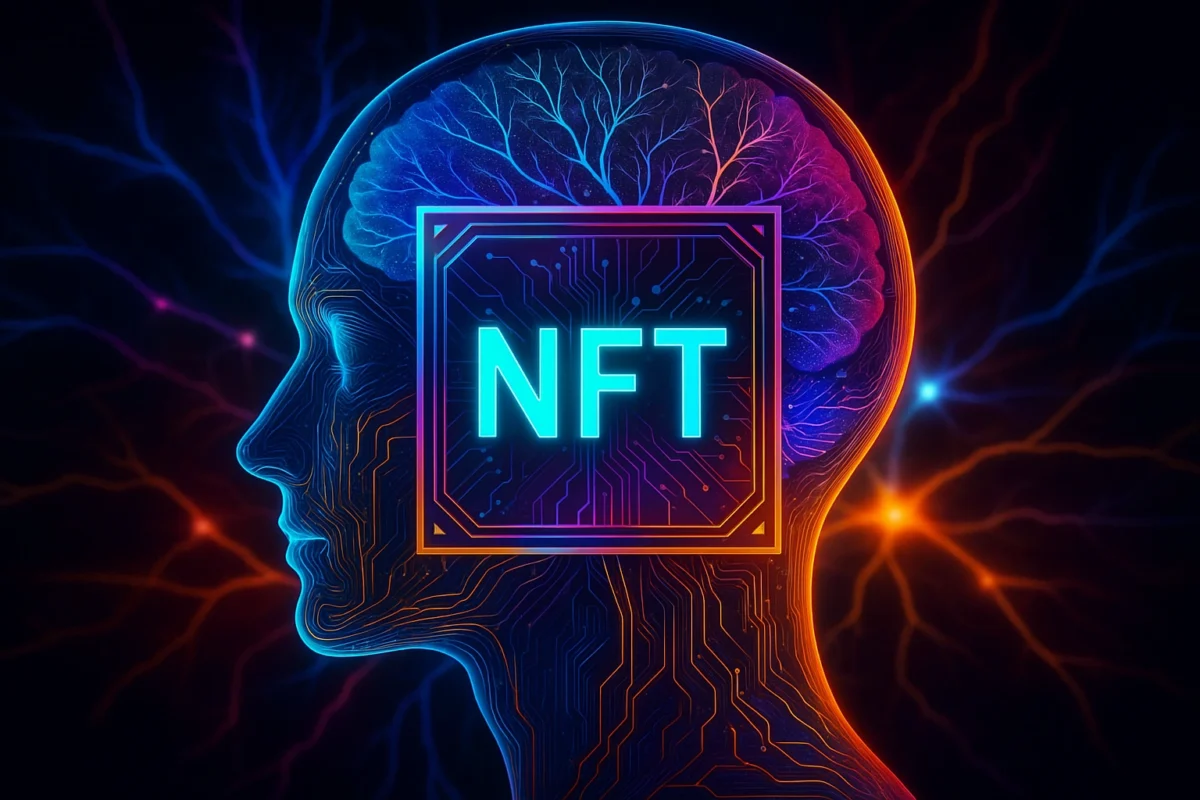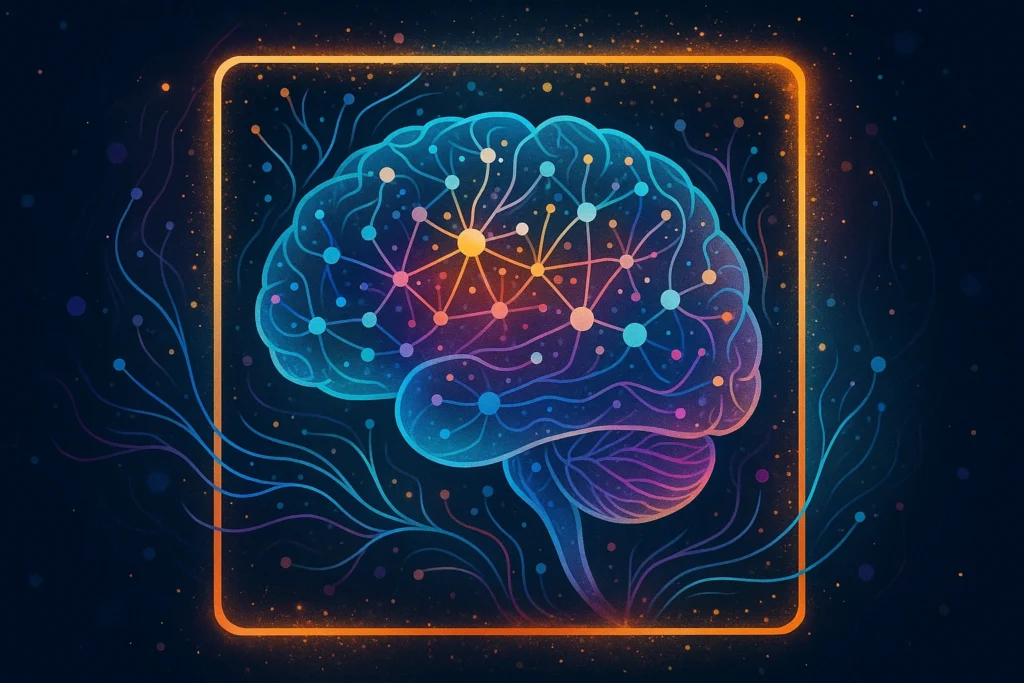The Neuroscience of Digital Ownership: Why NFTs Matter

Remember when everyone thought NFTs were just a fad? Headlines were all about hype and speculation, but beneath the noise, something more profound was at play: the human brain’s relationship with ownership or NFT psychology.
Why do we care about digital items we can’t even touch? Why do these tokens hold a value far beyond their pixels? The answer lies in neuroscience and psychology.
Our brains are wired to assign emotional value to symbols, memories, and possessions. NFT psychology taps into these traits, explaining why people form attachments to digital collectibles, why these marketplaces are booming, and why savvy investors still see a future in them.
In this article, we’ll dive into the neuroscience of NFTs.
Let’s start.
What Does Digital Ownership Mean?
Ownership isn’t just a legal term. In the brain, it’s an emotional process. When you own something like a car, a book, or a digital token, your brain marks it as part of your identity.
With NFTs, ownership becomes digital yet personal. Instead of holding a painting, you own a token that proves the painting is yours. Neuroscience shows that this proof triggers the same pride, security, and self-extension as physical property.
This is where blockchain identity matters. Your wallet becomes your vault. The NFTs inside it represent status, taste, and personal history. To outsiders, they’re data. To the brain, they’re part of you.
Also See: The Chemistry of NFTs in Materials Science in Digital Tokenization
The Neuroscience Behind Ownership

Why do NFTs feel valuable, even if they’re intangible? Let’s look at how the brain works.
The Endowment Effect
Humans overvalue what they own simply because it’s theirs. This is called the endowment effect. Once an NFT enters a wallet, its worth often grows in the owner’s mind, regardless of market price.
For example, NBA Top Shot collectors often refused to sell their highlight clips even when offers exceeded their purchase price. Why? The moment those clips entered their wallets, they felt more valuable than the market suggested.
Memory Links
Possessions connect to memories. A signed ticket reminds you of a concert. An NFT can act the same way. These NFT memory links create emotional anchors. A digital collectible tied to an event, game, or community becomes a trigger for personal nostalgia.
For example, music NFTs on platforms like Royal allow fans to own a share of a song. Years later, listening to that track will recall not only the music but also the pride of ownership.
Dopamine and Reward Systems
Buying an NFT lights up reward circuits in the brain. The uncertainty of bidding or minting mimics gambling behavior. This explains why NFT user behavior often shows bursts of activity around launches or auctions.
Take Bored Ape Yacht Club’s early mints. People stayed up through the night, refreshing screens, waiting for the reveal. The dopamine rush wasn’t only about owning the ape. It was about the thrill of the unknown.
Social Identity
Humans seek belonging. NFTs become signals of community membership. A profile picture NFT isn’t just an image. It’s a badge that says, “I’m part of this group.”
This explains why BAYC members flaunt their apes on Twitter or Instagram. To outsiders, it’s art. To owners, it’s a tribe.
Why Emotional Value Matters in NFTs
For many, NFTs aren’t about flipping for profit. They’re about emotional value. Owning an NFT from a favorite artist feels like holding a piece of their world. Collectors describe it as closeness, even intimacy.
For instance, Beeple’s “Everydays” didn’t sell for $69 million only because of scarcity. Buyers valued it as a cultural artifact, linked to years of digital art consistency. The purchase symbolized identity and history, not just investment.
Brands and marketplaces now lean on this. By creating drops with story and meaning, they tap into deeper motivation. It’s not only about scarcity. It’s about emotional connection.
This is why NFT marketplace trends show growing focus on storytelling, gamified ownership, and community-driven rewards.
NFT Investor Behavior Through a Neuroscience Lens

Not all NFT buyers think alike. Understanding NFT investor behavior requires blending market analysis with psychology.
Short-Term Traders chase dopamine spikes. They thrive on fast bids, flipping assets, and the thrill of auctions. Think of the early days of Pudgy Penguins, where traders flipped for profit within hours.
Collectors buy for meaning. They value memory links and cultural significance.
Identity Builders use NFTs as extensions of self. BAYC, Doodles, and Azuki owners fit this group, where the token is as much about social proof as it is about value.
By understanding these profiles, platforms can tailor experiences and build loyalty.
The Role of NFT Marketplaces in NFT psychology
NFT platforms are not just shops. They’re designed environments that guide human psychology.
- Scarcity Mechanics: Limited editions push urgency like NBA Top Shot drops.
- Auction Dynamics: Bidding triggers competitive drive.
- Social Visibility: Leaderboards and badges strengthen group identity (OpenSea’s trending boards).
- Storytelling Layers: Narrative-rich drops strengthen emotional value (World of Women weaving empowerment stories into NFTs).
- Smart platforms are already adapting psych NFT investing principles treating ownership as more than a transaction.
Also See: Are Green NFTs Real or Just Rebranded Hype?
NFT Memory Links in Action
Think of a childhood toy. Even if it’s gone, the memory stays powerful. NFTs replicate this effect digitally. When a person buys an NFT, their brain ties that digital object to the context in which it was acquired like the time, the community, the emotions involved. For example:
- An NFT bought during a historic sporting event can lock that memory into digital form.
- A digital artwork linked to a major life event, like graduation or marriage, creates a memory anchor.
- Communities tied to NFTs, such as gaming guilds or art circles, reinforce collective memory.
These NFT memory links explain why owners are reluctant to sell, even when offered high prices. The NFT has become a memory container, not just a financial asset.
The Future of NFT psychology
The intersection of psychology, neuroscience, and blockchain is still unfolding. Here’s what’s ahead:
1. Personalized Ownership Journeys
AI and behavioral data will track NFT user behavior, recommending tokens based on emotional fit, not just investment value.
2. Emotional-First Marketplaces
Marketplaces will lean more on memory triggers, nostalgia design, and social signaling. Imagine platforms curating NFTs based on your life events, not just wallet history.
3. Deeper Identity Integration
NFTs will link to avatars, metaverse presence, and blockchain identity, merging online and offline self. Think of gaming skins that also double as metaverse ID cards.
4. Long-Term Retention
Platforms will design loyalty through psychology, making NFTs less about quick flips and more about lifelong connection. Expect NFT loyalty systems blending ownership with long-term rewards.
Conclusion
NFTs are not only about technology. They are about psychology. The brain responds to digital ownership much like physical possession. Emotional value, memory links, and identity shaping drive their importance.
As neuroscience NFTs research grows, we’ll see better insights into NFT psychology, guiding how marketplaces design experiences.
FAQ – NFT psychology
Why do people feel attached to NFTs?
Because the brain treats digital ownership like physical ownership. Emotional and memory systems link value to possession.
Are NFTs just speculation?
No. While speculation exists, many users buy NFTs for meaning, status, and memory.
What drives NFT marketplace trends?
Scarcity, social signaling, and emotional storytelling drive engagement and retention.
How does neuroscience shape NFT investing?
By explaining why people value digital assets, it helps predict NFT investor behavior and design better platforms.